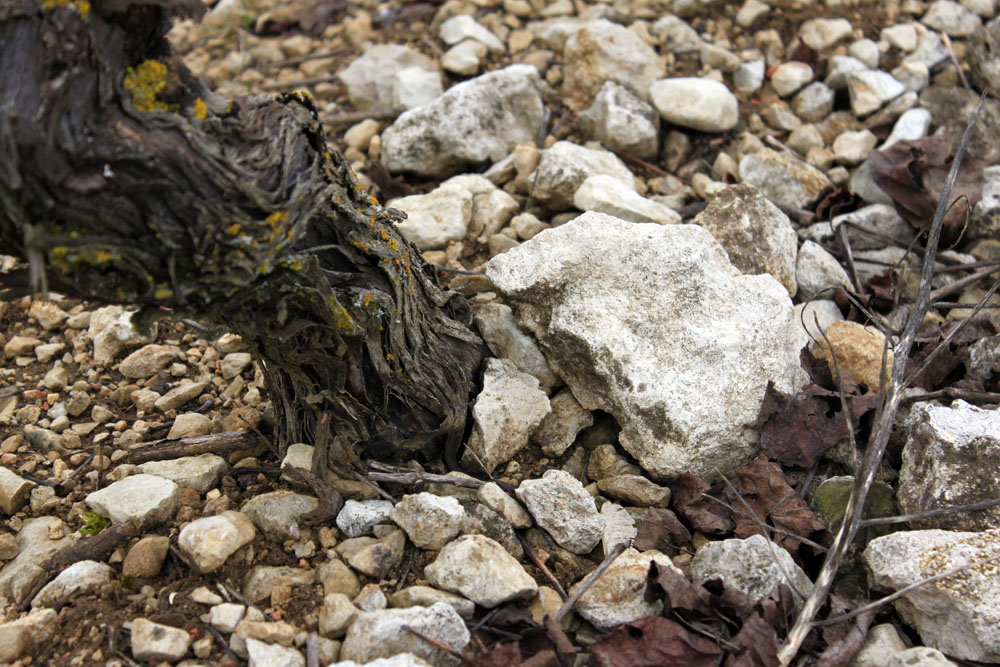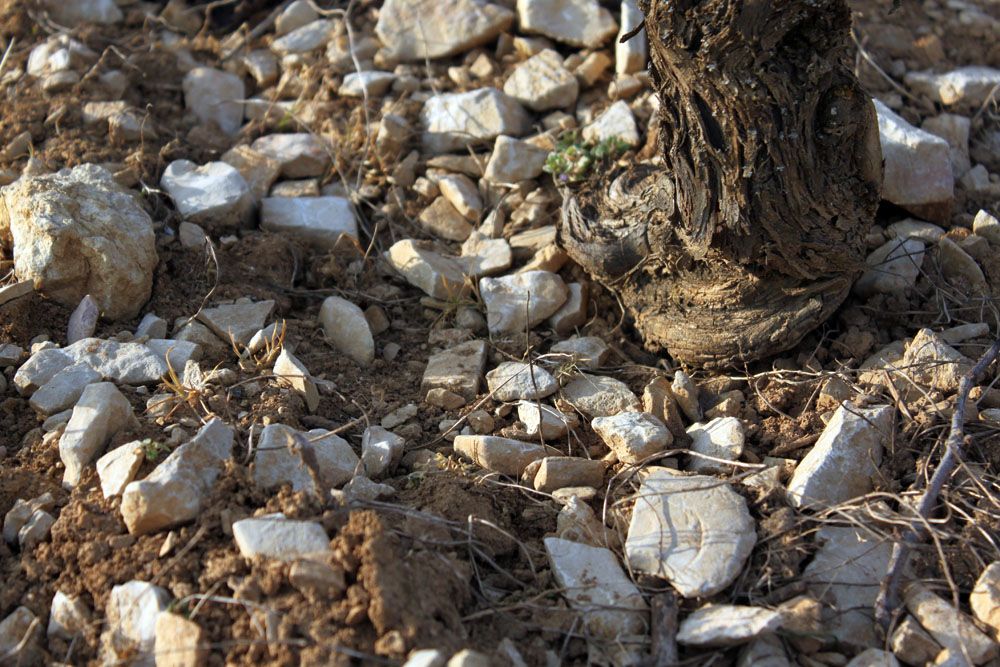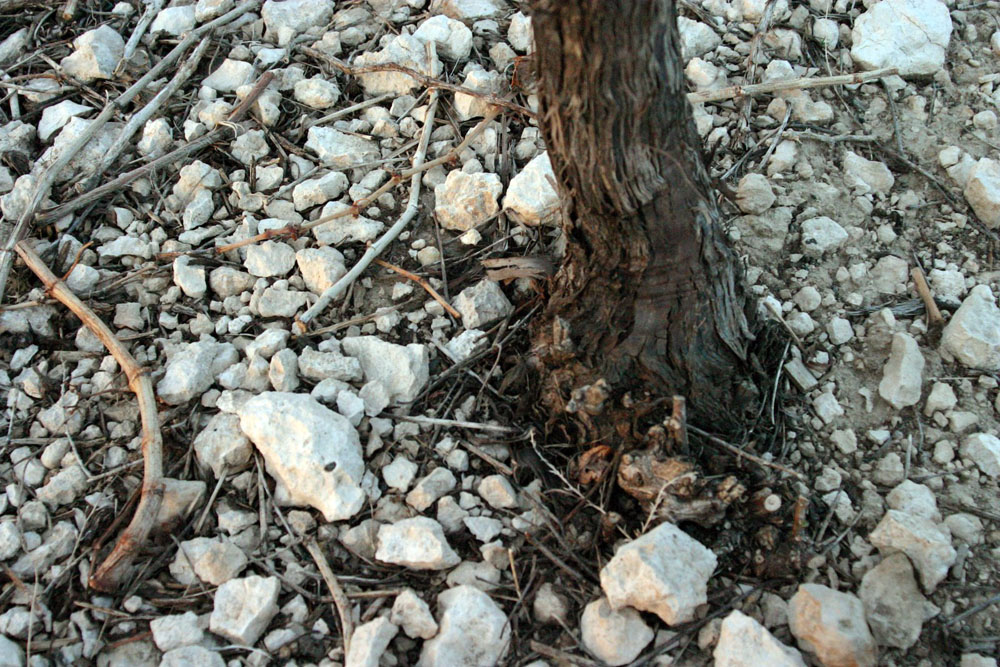The French Connection
Many people ask why we can grow such great Pinot Noir in the Kuna Butte area when no one else in the Snake River Valley seems to have any plantings. The old Burgundian saying is that “it’s all about the soil.” Pinot Noir especially thrives in the very basic, mineral rich soils of Burgundy, the motherland so to say of Pinot Noir and Chardonnay, and the best vineyards are planted on the well drained limestone slopes where the soil is a perfect mixture of limestone and clay. While the Snake River Valley isn’t exactly rich in limestone, we do have something that is very similar, caliche.
The arid Snake River Valley is a perfect storm for caliche formation. Our occasional late summer afternoon thunderstorms leach the upper soil horizons of calcium carbonate but the warmth of the summer afternoon dries the soil quickly, leaving the calcium carbonate to precipitate further down under the top layers of soil. Over time this creates a calcium carbonate rich zone, or caliche, a few feet below the surface. Both limestone and caliche are composed primarily of calcium carbonate, in fact the rocks are chemically identical, the only difference being the formation process of the two.
Can you guess where these photos were taken? Make a guess then scroll your mouse over the photo to see the answer.
Why is no one else growing Pinot Noir in the Snake River Valley then? If the area is such a high caliche producer, shouldn’t Pinot Noir be a great fit for any vineyard in the valley? Not necessarily! In the late Pleistocene (~15,000 years ago) the great Bonneville flood came ripping through the Snake River basin, ripping away any current soil and leaving a mix of sand and gravel in it’s wake. This means that the caliche has had less than 15,000 years to form anywhere the Bonneville flood came though as opposed to nearly a million years in the areas above the flood zone. While a sand and gravel soil is great for growing grapes like Malbec, Viognier and Tempranillo, it is not the best for Pinot Noir and Chardonnay. The difference is amazing too. Soil samples show that the calcium carbonate content of the soil in the Sunny Slope area is in a range of 5-10%, while on the higher ground near Kuna Butte it reaches levels up to and sometimes above 40%!
While we don’t have the exact soil conditions of the Burgundy region, we do know that we have something special. Just as the Napa Valley makes Napa Valley Cabernet, not Bordeaux, we are producing our own unique Snake River Valley Pinot Noir, not red Burgundy.



